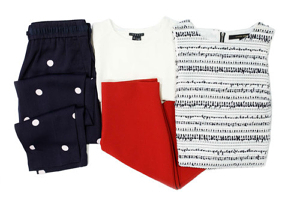Ambika Singh, CEO – or as her company Armoire calls her, ‘Chief Bosslady’ – was named as one of Puget Sound Business Journal’s 40 under 40 this year. For her to be recognized as one of Washington’s most prominent young businesspeople by a publication she read in her childhood was a dream come true. It was also recognition for Armoire – the Seattle-based company looking to make its mark on the ~$2.4T fashion sector.
Armoire is ‘the infinite closet for today’s bosslady’, according to Singh, designed to save them time for themselves. At its heart, the company wants to allow ‘bossladies’ across the world to be busy and social while being stylish. Armoire helps professional women cut down the time ordinarily spent shopping and provide access to a ever-changing wardrobe. Doing this allows their customers to overcome the two biggest challenges to looking fashionable – time and variety.
How Armoire works
It accomplishes this by using an AI-driven recommendation engine that determines customer tastes. Armoire’s proprietary algorithm builds customized profiles for users through a short digital process. By using images of outfits and through directed questions, it builds a customized user profile which accounts for colors, patterns, fabrics, cuts, and style.
Relying on this data, it presents users a curated collection of designer outfits, from which they can select 4 for a monthly rental of $149. These are shipped to the customer at no additional cost and can be kept for as long as the customer wants. If they get really attached, customers can purchase the outfits at a discount. At whatever time they tire of the outfits, they can be returned – to be replaced by another set of outfits which can be selected from the website again.
As the algorithm tracks which outfits you tend to select from a collection, it gets better at suggesting outfits for you. Each customer is also expected to provide feedback to the company, helping them better customize their service and increase satisfaction with the clothing they select. Armoire gives these insights to their suppliers, and in return gets its inventory at better prices.
Armoire’s fashionable value proposition
Armoire’s target audience is those busy working women who feel the pressure to be dressed appropriately for a variety of different occasions in their lives. Being a fashionably dressed woman at work requires navigating more questions, styles, and varieties than their male counterparts do. For modern women to take the time, effort, and expense to fit that mold is an unwelcome addition to the existing set of tasks society and the world expects them to perform.
The underlying truth is that a fashion-oriented lifestyle is too expensive for women to maintain in terms of time and money. The Bureau of Labor Statistics (BLS) data shows that the 2017 average time spent by women on shopping was .83 hours a day – which is 49.8 minutes daily, and a staggering 302.95 hours annually. BLS data also shows that in 2016, 25-34 year old Americans spent $161 on clothing, while 35-44 year olds spent $201 on average.
The company’s service is designed to deal with these problems. Time is saved as the company’s technology uses data to curate suggestions, while its products take the guesswork out of getting dressed. By ensuring that the outfits are sent to the customer’s home directly, it saves them the effort involved in shopping, making the experience more convenient. Armoire even helps their customers look fashionable at an affordable cost.
The future of fashion – renting?

The current culture of browsing, buying, wearing, and discarding is toxic for the environment, takes up too much time, and costs too much. Like many other industries, the fashion space seems to invite disruption. Today, there’s a wide variety of startups using technology in a variety of ways to disrupt the fashion industry.
Don’t like the designs you get in the market? AI-driven design is on the way, even though Google’s Project Muze gave a shaky start to that potential model in 2016. AI-assisted human design is also en route, via a project between IBM and Tommy Hilfiger. Technology is also being deployed to attempt to predict trends, and AI is uniquely placed to accomplish that purpose. By crunching through reams of data, it can make educated guesses about what is changing on the supply side of fashion. Getting ahead of the curve and predicting what is trend to be the new black is a huge multi-million dollar opportunity in a multi-trillion dollar industry.
But demand-side data is probably harder to find. While surveys and other data-collection exercises can be undertaken, Armoire distinguishes itself from other wardrobe rental services through insight delivery to designers. As its base of subscribers grow, the combination of the user profile, preferences over time, and selection patterns would create a dataset of increasing value.
Companies like Rent the Runway, Le Tote, and Gwynnie Bee are also selling rental as the new paradigm in fashion. Their services have much in common with Armoire from a customer’s point of view – subscription, a rotating selection, returns, and so forth. Armoire’s uniqueness stems from two facets – its data-driven customer-facing suggestion engine, and its ability to provide insights to suppliers.
Is Armoire wearing the same outfit as someone else to the party?
Is this differentiator enough to keep Armoire relevant in what is quickly becoming a crowded market in rental fashion? New York City-based Rent the Runway has rocketed to a $800M valuation, and has quickly become a favorite among high-end designers. Fashion houses are impressed with the quantum of inventory Rent the Runway is taking from them, and are happy that renting is opening new audiences to their wares.
For Armoire to stand out from the crowd, it must do precisely as it claims – make high-end fashion accessible to a wider audience, give customized selections to customers, and actionable insights to producers. Even if it manages to do that, it will have to fight competition from companies with greater funding – including companies which, for customers, will appear to have the same service.

But Singh has one more card up her sleeve – being a bosslady, catering to other bossladies. She is able to use this strong emotive appeal to get influential people signed onto the company’s services. She persuaded the CEO of The Riveter, the coworking space they work out of, to become a customer. Singh then used her to create a blog targeted at female CEOs. To appeal to the ‘woke’ successful professional woman, Armoire has also started its own line of t-shirts, leggings, and sweatshirts proclaiming ‘boss lady power’.
Armoire is bringing its refreshing brand message and intriguing business model to the big battle for the future of women’s fashion. Only time will tell if they are dressed enough for the occasion.
Subscribe to our newsletter



